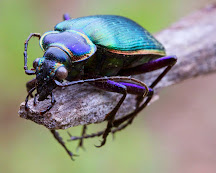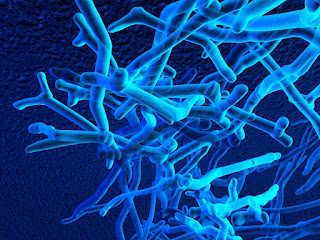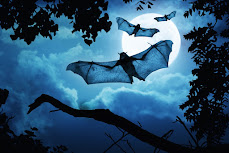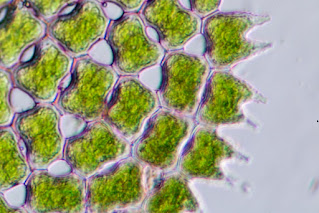At this time of year, we are all encouraged to find things
to be thankful for and this year I'm encouraging you all to look beyond humans and to consider
all the other
living things that help us survive on our planet. Without the input of these creatures, the conditions that allow people to live comfortably would
not exist (or perhaps humans wouldn’t exist at all). All of these deserve our gratitude. While we are familiar with
many animals that are essential for the environment (hello, bees), there are
many others you may not think of. I’d like to introduce you to some.
BENEFICIAL INSECTS & NEMATODES- Here at ARBICO
beneficial insects are a big part of our daily lives, so I can’t help but
mention them first as something to be thankful for. We are all about good bugs
that kill bad bugs. We have bugs that fly around hunting others, bugs that
crawl around to hunt, and others that burrow through the soil while hunting.
Some like specific prey, and some eat just about everything they come across.
What all these beneficials have in common is that they feed on things that feed
on our food. In other words, they keep gardens free from predators, so they can
grow lushly and produce prolifically. If you are not familiar with all that we
have, this page will
get you started on learning more.
BENEFICIAL MICROORGANISMS - As far as beneficials go,
insects may be the stars of the show, but beneficial microorganisms are
essential supporting characters. Without healthy soil, full of bacteria,
mycorrhizae (and even fungi), your soil will not be able to sustain any plant life.
These tiny beings are crucial for our survival, but it’s probably safe to say
they never cross the mind of most people. Let’s take a minute to be thankful for them. We have a great many products that have one form or another of
beneficial microorganisms, but they really shine in our
microbial inoculants.
BATS – There’s nothing scary about bats; they are gentle mammals that are great to have around.. On any “
World’s Most Dangerous Animals” list, you’ll find mosquitoes listed as the most
dangerous (those that don’t include humans, that is). They kill roughly
725,000 people a year from the various diseases they carry, so any animal that
can put a dent in that number should be thanked. An individual bat can eat
1-2,000 mosquitoes an hour, so just imagine how many a large colony can take
care of! Experts say that birds eat more mosquitoes than bats, but those bats
that are not insect-eaters are pollinators. So, bats are either eating a deadly
insect, or pollinating our plants – a two-fold reason for appreciating bats. One
more thing: their
guano is excellent
fertilizer.
BEAVERS – Most of you reading this have probably never see a
beaver in the wild, but you should be thankful for them nonetheless. These
North American mammals are tireless stewards of our waterways and their busy
aquatic lifestyle keeps wetlands wet, groundwater levels up, and provides essential firebreaks that protect forests. Even if you don’t have beavers where
you live, all life benefits when waterways are working as they should. Any
creature that protects such a crucial resource as water get my thanks.
This article tells
how scientists in California are working with beavers to combat devastating drought and
fire caused by climate change that state.
SHARKS - I realize that this creature provokes a visceral response in many people, but it really does play an important part in keeping our oceans in balance. And we all know that a healthy ocean is key to life on Earth. Sharks preserve the balance in the sea by being an apex predator, but they also keep coral reefs healthy. They do this by eating the fish that eat the herbivores that graze on algae. When there is too much algae, the coral (and other species) will die off (for more on why reefs are important, watch
this video). On the other hand, the appetite of sharks also prevents the overgrazing of seagrass (which store carbon and help prevent erosion). They do this by eating herbivore fish, so they are really working both sides of the equation. For more on the what the wondrous shark can do,
here is an excellent short article. Thanks, you big toothy environmental warrior!
SQUIRRELS – Squirrels are (with the exception of Australia
and Antarctica, found all over the world), so they are very familiar to most people. These
bushy-tailed little mammals are both endearing and entertaining as they scamper
about in their busy little way. And it’s this behavior that we should be thankful
for. As squirrels gather, eat, bury, store, and poop out seeds and nuts they
are keeping the forest floor groomed and are ensuring a healthy distribution of
future plants and trees. According to
this article,
it’s estimated that squirrels can be credited with planting millions of years
every year in North America alone.
PHYTOPLANKTON – These microorganisms are even more important
to life on Earth than soil microorganisms. These microscopic marine algae are a
key component in both marine and freshwater ecosystems, but their impact goes
beyond the water. As the foundation of the aquatic food chain, without this
tiny creature whales, seals, sea birds and even humans would go hungry. But probably the
most important role that phytoplankton play is in producing oxygen – up to 2/3 of the world’s atmospheric oxygen.
We are all aware that trees produce oxygen, but it is these hardworking
microorganisms that produces the most for us by far. This, simply put, is why we
need clean oceans. So that they can continue to thrive and survive. Although
they may be hard for some people to appreciate because they cannot be seen,
let’s just consider them magic. A vital environmental magic.
 Of course, there are many other creatures on this planet to
appreciate; in a well-functioning ecosystem all parts played by each species
are important. I challenge you all to notice, and be grateful for, those that I
did not have space or time to mention.
Of course, there are many other creatures on this planet to
appreciate; in a well-functioning ecosystem all parts played by each species
are important. I challenge you all to notice, and be grateful for, those that I
did not have space or time to mention.
Take Care Submitted by Pam
 In China the mum is venerated as a whole –their symbolism, their beauty, their medicinal qualities, their spiritual potential, and even their flavor. To underscore this devotion, look no further than this ancient Chinese saying: “If you would be happy for a lifetime, grow chrysanthemums”. As far back as 3,000 years ago Chinese people have been planting, painting and writing about the Chrysanthemum. It is one of the Four Gentlemen of traditional Chinese art. These four plants are the plum blossom, orchid, bamboo and chrysanthemum. They each represent a season (plum blossom-winter, orchid-spring, bamboo-summer and mums-autumn) and also embody the highest levels of integrity and moral character. Although these ideals/images became part of the culture in the time of Confucius (551-479 BCE), they have remained an element of Chinese thought even through communism. Chrysanthemums are now a part of Chinese identity, with towns being named after the flower (Chu Hsien=Chrysanthemum City) and weeks-long festivals held in its honor.
In China the mum is venerated as a whole –their symbolism, their beauty, their medicinal qualities, their spiritual potential, and even their flavor. To underscore this devotion, look no further than this ancient Chinese saying: “If you would be happy for a lifetime, grow chrysanthemums”. As far back as 3,000 years ago Chinese people have been planting, painting and writing about the Chrysanthemum. It is one of the Four Gentlemen of traditional Chinese art. These four plants are the plum blossom, orchid, bamboo and chrysanthemum. They each represent a season (plum blossom-winter, orchid-spring, bamboo-summer and mums-autumn) and also embody the highest levels of integrity and moral character. Although these ideals/images became part of the culture in the time of Confucius (551-479 BCE), they have remained an element of Chinese thought even through communism. Chrysanthemums are now a part of Chinese identity, with towns being named after the flower (Chu Hsien=Chrysanthemum City) and weeks-long festivals held in its honor.



























